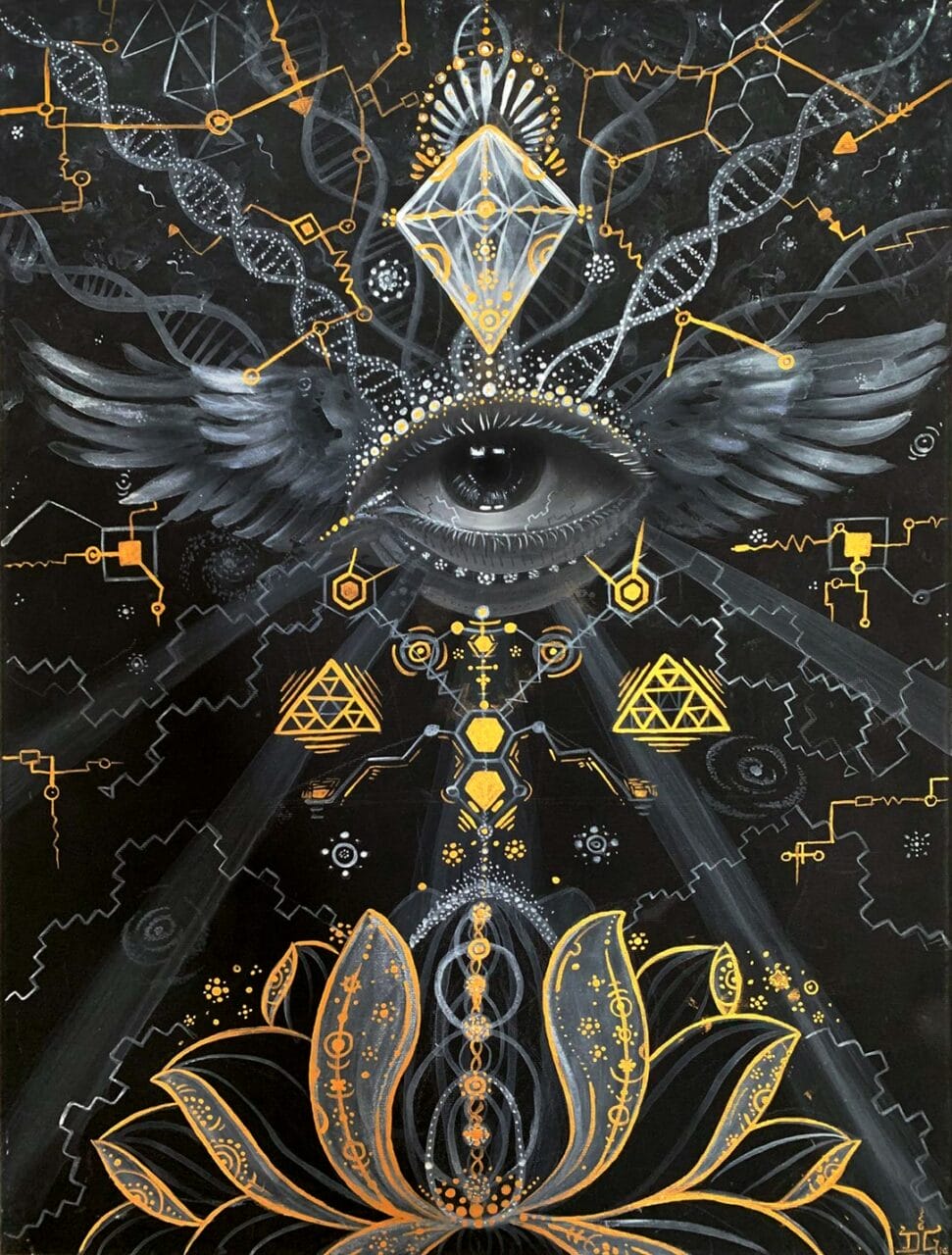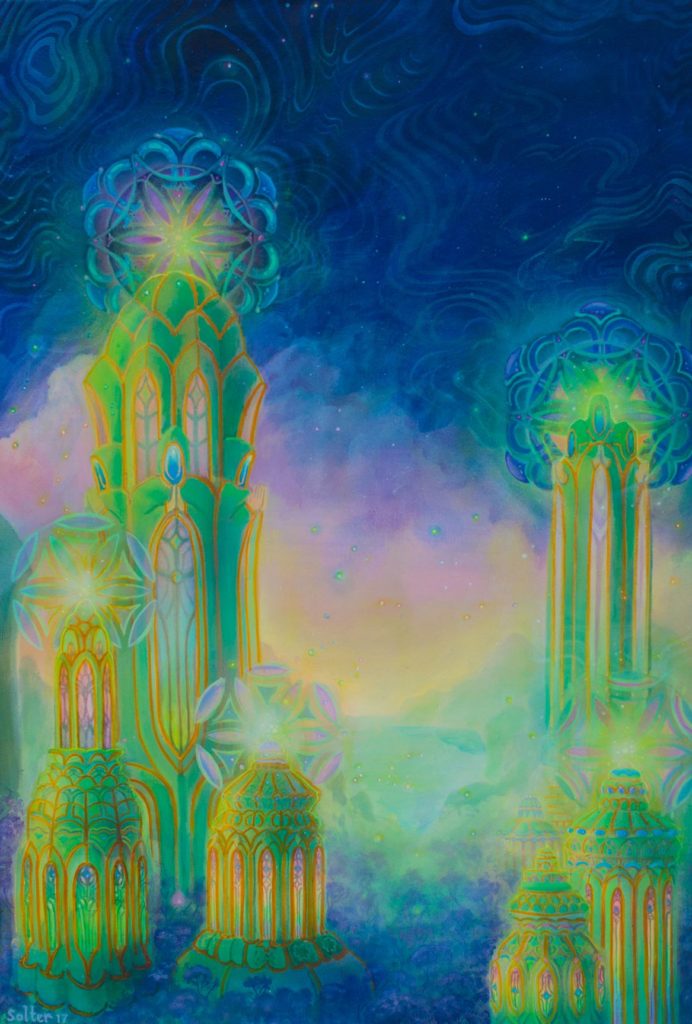
© Uni Kaya
Historic Annals of Magic Mushrooms
According to historical archives, the existence of Magic Mushrooms can be traced back to 9000 BC. These unique mushrooms, boasting over 200 distinct species, contain psilocybin, a compound known for its hallucinogenic properties. This substance can trigger altered states of consciousness, visual and auditory hallucinations, as well as deep spiritual experiences. For millennia, these mushrooms have been used in various cultural, spiritual, and ritualistic practices across different cultures and tribes. A majority of these historic usages originated in North and South America.
Magic Mushrooms in Ancient Times
Throughout history, many cultures have made use of natural psychedelics. Evidence found in the Sahara Desert suggests that humans were using Psilocybe Cubensis as early as 7000 years ago. Archaeological findings show depictions of this psychedelic substance in prehistoric art across various regions. For instance, indigenous tribes of North Africa in the Sahara represented its usage in their artwork dating back to 9000 BC. In a similar vein, the renowned Selva Pascuala mural rock painting in Spain, approximately 6000 years old, demonstrates the use of Psilocybe Hispanica in religious rituals. The influence of these substances on our cultural evolution, religion, art, societal norms, and everyday life is becoming increasingly apparent. This substance has undeniably left a deep mark on our culture and society.
A Historical Overview of Magic Mushrooms Usage
Over the course of history,Magic Mushrooms have had a long-standing usage. The psychoactive substance we know today has traversed through various eras, with diverse practices related to its use. It’s about time for Buy Magic Mushrooms Canada to delve into the historical progression that has led Magic Mushrooms to its current state.
Key Milestones
- Dried Magic Mushrooms have played a significant role in traditional rituals and spiritual healing for centuries. Today, it serves as a treatment for mental health disorders.
- Magic Mushrooms became emblematic of the hippie movement and played a significant part in the psychedelic revolution, encouraging its recreational use.
- Luminaries like Wasson, Sabina, and McKenna were instrumental in bringing psilocybin to the forefront of the modern world.

© Jonathan Solter
Backing the Stoned Ape Theory
The Stoned Ape Hypothesis, proposed by Terence McKenna, suggests that psilocybin could have been instrumental in human evolution, particularly in the development of cognition. Even though it has faced objections, the intriguing nature of this theory remains unchallenged.
Ancient Societies and Sacred Rituals
Historically, societies have portrayed cubes through symbols, art, and statues to indicate the ritual usage of Magic Mushrooms. The Mayans and Aztecs primarily used it to contact supernatural beings, including gods. In the culturally rich Aztec community, it was referred to as “teonanácatl“, which translates to “flesh of the gods”. The concept of a psychedelic experience was unknown to them, causing them to interpret it as a divine entity. Moving north to Siberia, hallucinogenic Magic Mushrooms were employed by Siberian shamans. They specifically utilized the hallucinogenic substance (Magic Mushrooms) known as “Amanita Muscaria” for spiritual healing and traditional customs, despite its poisonous nature. This practice dates back to almost ten thousand years ago. In African tribal ceremonies, notably among the Congo and Zimbabwean tribes, cubes were used for communicating with ancestors, inducing visions, and promoting spiritual healing. These historical societies add context to the current use of psilocybin. The reverence for this substance in these cultures stemmed from its divine association and its ability to provoke mystical experiences.
Magic Mushrooms in Myth and Folklore
Numerous stories, including those by Gordon Wasson, have highlighted the connection between Magic Mushrooms and the mystical world, underscoring its role in folklore and mythology as a medium for divine communication and enlightenment. In ancient India, the Soma—a ceremonial drink mentioned in the Vedas—was believed to induce altered states of consciousness. Scholars like Wasson speculate that it could have been made from psychoactive plants, specifically fly agaric. Some even suggest that this ancient concoction might have included a mix of various plants. Regardless of its origins, the psychedelic history suggests that Soma facilitated the display of sacred symbols during rituals, signifying a portal to higher wisdom or spiritual enlightenment.
The Contemporary Era
A Brief on the
Origins
400;”>Historical accounts from the era before European contact show that the Mayans and Aztecs utilized psilocybin Magic Mushrooms. However, Spanish authorities in the 15th and 16th centuries labeled its use as uncivilized and subsequently outlawed it. Despite this ban, shamans secretly continued consuming magic Magic Mushrooms, thereby safeguarding their cultural traditions for over 400 years.
Rediscovery by the Western World
The 1950s saw a revival of interest in these substances in the West, largely due to the pioneering work of individuals such as R. Gordon Wasson, Roger Heim, and Albert Hofmann. During a visit to Mexico, they managed to isolate the two psychedelic components (psilocybin and psilocin) present in the Magic Mushrooms obtained from the Mazatec tribe. Wasson later shared his experiences, applications, and insights about magic Magic Mushrooms in Life magazine. His articles and personal narratives led to the recognition of the substance as a potent hallucinogen. By the 1960s, the substance had become emblematic of the Hippie culture and was perceived as a conduit to spiritual experiences. However, its usage also incited considerable controversy and triggered a shift in the recreational use of hallucinogenic substances.
Subsequent Progress: Worldwide Prohibition
In 1971, psilocybin was classified as a Schedule 1 illegal drug by the United Nations Convention on Psychotropic Substances, alongside Lysergic Acid Diethylamide and N, N-Dimethyltryptamine. At that time, they were all considered to have no medicinal value and a high potential for misuse. This resulted in widespread criminalization in Western nations, including Canada and the U.S., significantly limiting the spiritual and therapeutic use of the substance.
The Modern Resurgence of Psilocybin
In recent years, the strict laws regulating the use of psilocybin have begun to ease, starting with its decriminalization. This shift is in line with the UN’s provision that allows treaty member countries to control the substance according to their own judgement. Simultaneously, a growing body of research and clinical trials on psychedelics and consciousness strongly advocates for potential medicinal uses of psilocybin. A study conducted in 2021 examining the therapeutic use of psychedelics suggests that the 1970 ban significantly hindered further research. However, a preliminary study in 2004 renewed interest in psilocybin, suggesting potential uses in neuropsychiatry, especially for treating mental health conditions such as:
- Depression, Anxiety, and Stress
- Post-traumatic Stress Disorder (PTSD)
- Obsessive-compulsive Disorder (OCD)
- Drug Abuse (Aiding in Addiction Recovery)
- Excessive Consumption of Alcohol and
The Influence of Art and Media
The topic of psychedelic cubes has expanded so much that it is represented in various formats. The renewed interest in these substances is fueled by diverse forms of media, art, and literature. Movies like “Fantastic Fungi” by Director Louie Schwartzberg, and documentaries that investigate their healing properties, have enhanced public understanding of their mental and physical effects. “How to Change Your Mind” author Michael Pollan has studied the use of psychedelics for mental health and spiritual development, sparking renewed attention to their societal and therapeutic value.
Prominent Historical Advocates of Fungi
- María Sabina: Sabina, a Mazatec shaman and poet from Mexico, contributed to the introduction of cubes to the Western world. She allowed Wasson to witness her Magic Mushrooms rituals.
- Gordon Wasson: Wasson, a writer, brought worldwide attention to the substance. His comprehensive account of his experiences with Sabina contributed to a broader understanding of its local use.
- Terence McKenna: A leading proponent of psychedelics, McKenna emphasized their cultural and philosophical significance. Through his speeches, writings, and research, he popularized the “Stoned Ape” theory, presenting it as a catalyst for cognitive development that had societal influence.
The Historical Journey – A Brief Summary
with TRD.
| Prehistoric | Stone art found in the Sahara, Africa, depicts prehistoric usage. |
| Ancient | Maya and Aztec civilizations incorporated teonanácatl into their religious and spiritual practices. |
| 16th Century | The use was discouraged due to its association with Indigenous beliefs. |
| 18th Century | In 1799, the “intoxicating” effects of the drug were highlighted when four children inadvertently consumed Psilocybe Semilanceata, underscoring the negative implications of its use. |
| 20th Century | Wasson and Sabina introduced the drug to the Western world, sparking the psychedelic revolution among hippies. The UN legalized the possession and use of the substance. |
| 21st Century | Clinical studies are being conducted to validate its potential medical benefits. |
The Emergence of the Psychedelic Era and Beyond Salvation | Purchase Magic Mushrooms Online at Buy Magic Mushrooms Canada
Buy Magic Mushrooms Canada’s consistent use of cubes, supported by robust scientific research, is expected to expand until it achieves worldwide acceptance. Buy Magic Mushrooms Canada’s online Magic Mushrooms store is prepared to aid this transformation. Our extensive range of products attracts customers, encouraging them to undertake the intriguing and therapeutic journey of psilocybin. Secure your preferred items from Zoomies today.
Commonly Asked Questions
No, Amanita Muscaria does not contain the active components present in Psilocybe Cubensis. Instead, the psychoactive substances in fly agaric are muscimol and ibotenic acid. There’s a prevalent theory suggesting that Soma originated from a combination of various psychoactive plants. Similarly, ayahuasca is a beverage that alters consciousness. The only link between the two is the perception of soma as an analogue of ayahuasca. It was scrutinized for potential Magic Mushrooms toxicity after being classified as a poisonous Magic Mushrooms. Currently, we recognize it as the Psilocybe Mexicana.

